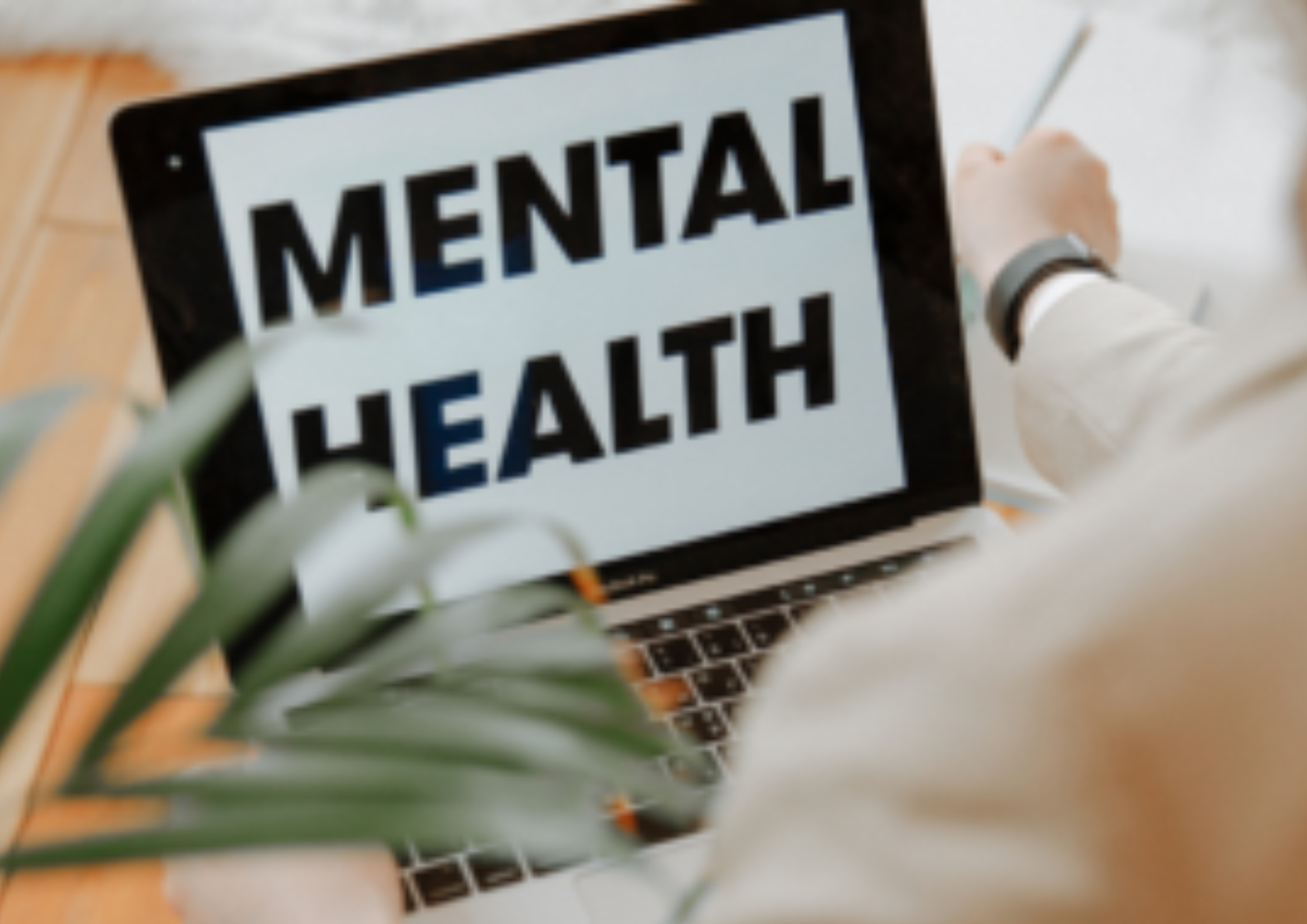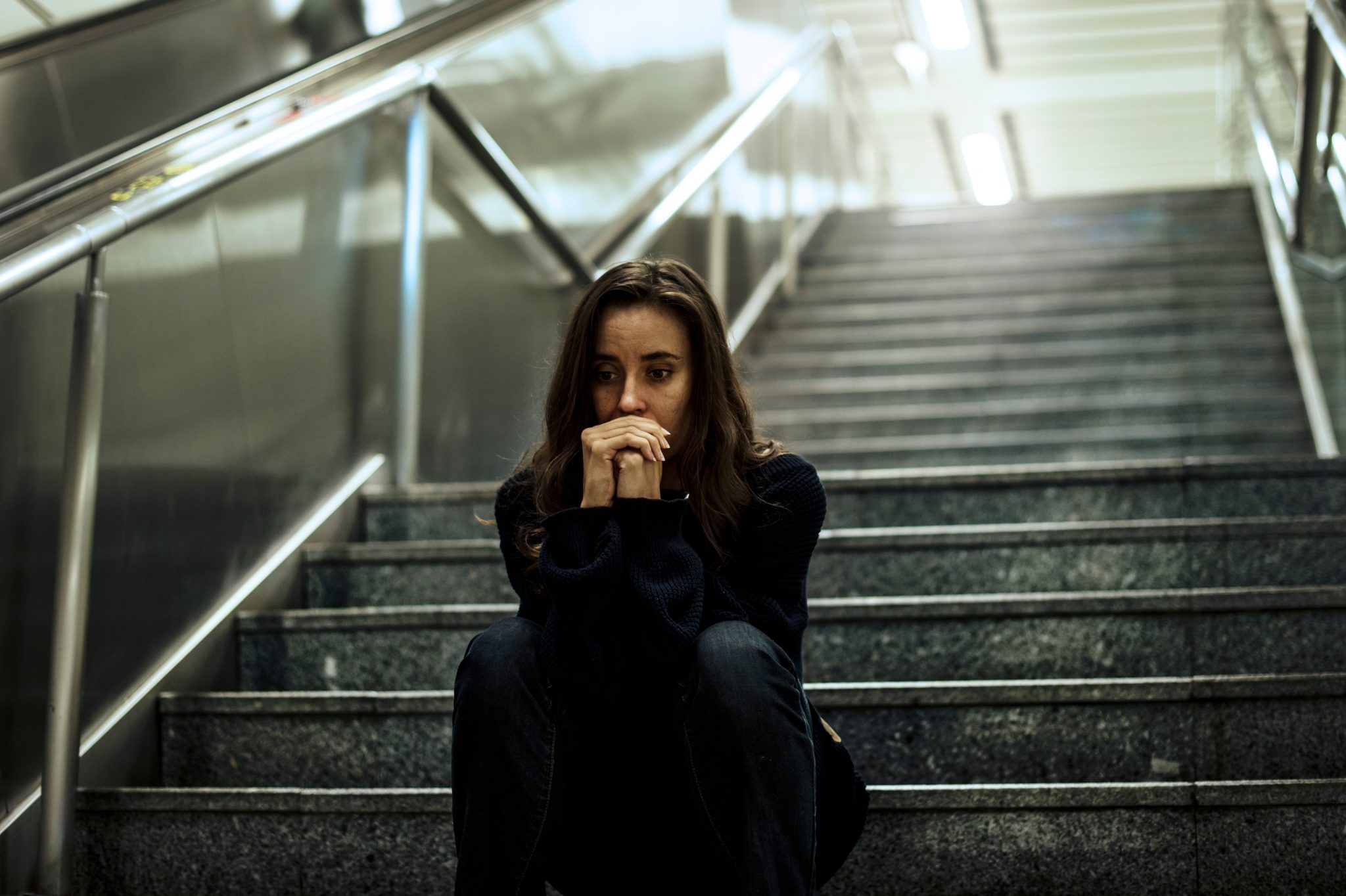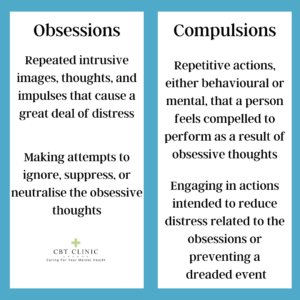
20 Things That Make Intrusive Thoughts Worse
CBT Therapy and Intrusive Thoughts
We’ve spent a look of time recently writing about treatments to make Intrusive Thoughts and Pure O better however there are lots of things which you can avoid which make intrusive thoughts worse.
The top ten worst external behaviours you can do to combat Intrusive thoughts or Pure O:
- Substances/ Illegal Drugs
- Alcohol
- Gambling
- Self Harm /
- Porn
- Excessive Eating
- Avoiding things that trigger the intrusive thoughts
- Excessive Gaming
- Excessive TV/ Screen Time
- Excessive Exercise
The top ten worst mental behaviours you can do to combat Intrusive thoughts or Pure O:
- Fight and struggle with the thoughts
- Try to push them away or out of your mind
- Try to change/ alter them.
- Repeat religious prayers
- Pray to God or a higher power to take them away
- Reassure yourself
- Count backwards from 100
- Positive thinking
- Affirmations
- Talk to or reason with the thoughts/ that part of your mind
CBT Therapy London
Cognitive Behavioural Therapy (CBT Therapy), Mindfulness Meditation and Medication can all be used to treat intrusive thoughts and Pure O. We’ll tailor a plan to your circumstances, medical history, and underlying conditions to help you live a balanced life..
The CBT Clinic London understands and can help. After assessing your symptoms, medical history, and severity of your condition, we can devise a treatment plan and help you live your life to the full again.
Getting help is easy. Simply complete our new patient registration form or if you have questions, contact our friendly team who will assist you. You can call us on 0207 157 9924 or Book Online. Consultations are free and will reveal your diagnosis and enable us to create a customised treatment plan.
Learn More
Does Cognitive Behavioural Therapy (CBT Therapy) and Mindfulness Help Pure O or Intrusive Thoughts?
Does CBT Therapy Cure Pure O or Intrusive Thoughts?
Does CBT Therapy Cure Pure O? In short yes, it can help a range of problems including Pure O, OCD and Intrusive thoughts. Let’s look first at what intrusive thoughts actually are.
Intrusive thoughts are unwanted and can be distressing. They might pop up at any time in your head. Even though you might be lying down in bed, cleaning the dishes, driving to work, or sitting on your sofa, these disturbing thoughts or images frequently occur in your head in an upsetting way. There is always a disturbing concern and worry about the future, regardless of whether the ideas are violent or sexual.
Even while intrusive thoughts are a well-known sign of many mental health problems, including depression, PTSD, and OCD (Obsessive-Compulsive Disorder), many people do experience them. 94% of people, according to research, have experienced intrusive thoughts at some point, but this does not necessarily indicate that a person has a mental problem.
A person with OCD will have more troubling intrusive thoughts than someone without OCD, which is what sets them apart from someone who just experiences intrusive thoughts. For instance, if a person with intrusive thoughts is alone and has the bizarre thought of punching a random person they see close by, they will likely just go about their day believing it to be an odd thought. The same intrusive idea would cause anxiety in an OCD sufferer, who would question why they were thinking about it. They are very concerned about the motivation behind their actions.
There are a few things that cause these ideas, like stress and worry. If you want to know if you have intrusive thoughts, here are some symptoms to look out for:
- There are a few things that cause these ideas, like stress and worry. If you want to know if you have intrusive thoughts, here are some symptoms to look out for:
- Your thoughts are odd and very dissimilar from what you often think.
- You are working extremely hard to get rid of your troublesome thoughts from your mind.
- You struggle to regulate your thoughts, and the more you try, the worse it becomes.
It is crucial that you see a mental health expert if you believe you are exhibiting these symptoms. Medication and talking therapy particularly Cognitive-Behavioural Therapy (CBT Therapy), are available as effective treatments.

How to Help Pure O and Intrusive Thoughts
When you are having intrusive thoughts or Pure O, there are a few things you can do for yourself:
- Recognize that your thinking is just intrusive in nature and that it differs from how you typically think or believe.
- Don’t attempt to manage the thought. Accept things as they are rather than trying to change them, and it is likely they will go away.
- Try not to criticise yourself. You may feel that you have a problem or that you are a bad person as a result of these ideas but understand that these thoughts can be normal and don’t mean that something is wrong with you.
On the other hand, there are a few things you can practice as well:
- Mindfulness meditation
- Exercise or physical activity
- Deep breathing or progressive muscle relaxation
- Reframing negative thoughts
- Writing or talking about thoughts with a trusted friend
- Engaging in hobbies or activities that bring joy
- Challenge the thought’s validity by seeking evidence
- Practice self-compassion
- Distract yourself with a new task or activity
- Cognitive Behavioural Therapy (CBT Therapy)
CBT Therapist London
This article was curated by Alistair Bond – Senior CBT Therapist in London. He is the Clinical Director of the CBT Clinic London and he specialises in treating “Pure O” and OCD.
If you or a loved one are struggling with intrusive thoughts, please get in touch with us. You call our friendly reception on 0207 157 9924, email info@cbtcliniclondon.com or simply fill out our new patient registration form and we’ll get back to you.
We offer CBT Therapy either Online or Face to Face in our London Clinic. We also offer the option to combine both to suit your lifestyle and preference.
*We thank Sue (name has been changed) for her kindness and generosity in sharing her success story to help and inspire others.
Learn More
CBT Therapy Treatment for Intrusive Thoughts
Cognitive Behavioural Therapy (CBT therapy) Treatment for
Intrusive Thoughts or Pure O
Sue’s Story
This case study was written to show how effective CBT Therapy Treatment is for Intrusive Thoughts.
Sue* is a professional dance choreographer in her mid-thirties who lives with her partner and her dog in Greenwich, London.
Nine months ago Sue was walking the dog in her local park when she saw some children playing football. Suddenly out of nowhere, an image came into her head that disgusted her and she found it morally reprehensible.
Sue tried to get the thought to leave her head but it just wouldn’t go away. Over the next few weeks, more horrible and distressing thoughts of a similar nature kept coming into her Mind.
“They would plague me for hours and always be at the back of my mind – I thought I was going crazy or turning into someone I despised”
Everything she tried to “banish the thoughts from her mind” just wasn’t working. She got very scared and that was the point when she reached out to the CBT Clinic London for help. She searched on Google and found that the most effective way to treat Intrusive Thoughts was Cognitive Behavioural Therapy or CBT Therapy.
“Everything I tried to get rid of these frightening and horrible images just wasn’t working”.
CBT Therapy Treatment for Intrusive Thoughts
Sue was assessed by one of our Senior CBT Therapists at the CBT Clinic London who reassured Sue that these thoughts were completely treatable and would not be a feature for the rest of her life. In fact, they were so common that the media had termed them “Pure O” a form of OCD.
“I was greatly relieved to hear this as some of the forums and articles I had found online had said that I would have to live with these distressing thoughts for the rest of my life. “
Sue’s treatment plan was informed by the highly effective and clinically validated* CBT Therapy Model for the treatment of OCD. (see below)*

Although most people in Sue’s case are not doing any “outside world” compulsions which often are present in a classic OCD case the CBT Therapy Model for OCD (see below) is always the one we use said Alistair Bond one of the Senior CBT Therapists at the CBT Clinic London. Often we find that although sufferers of “Pure O” are not doing outward compulsions they are often or always doing inward compulsions. In Sue’s case, just one of the inward compulsions she was engaging in was counting backwards from 100 when the distressing images would intrude into her mind.
Once her treatment was concluded Sue’s distressing Intrusive Thoughts had completely gone away and her anxiety had returned to normal.
“I am so grateful to the clinic and in particular to Alistair Bond. He taught me why and how to accept the images and thoughts and how to reduce and eventually overtime, completely stop the mental compulsions. I learnt to work on the obstacles and barriers inside of me that were stopping me from being able to accept these very difficult and upsetting thoughts. Eventually overtime I was able to accept and learn from the thoughts until one beautiful day they just left me. “
The Clinical Measures we use at the clinic allow us to see Sue’s anxiety had reduced by 90% using Sue’s self-reported scores from when she entered treatment to when she exited treatment, She also reported no further intrusions.
As is our policy at the clinic we always do a 3-month and 6 month follow up. This is best practice in CBT Therapy. We are pleased to report that at the 3 and 6 month follow ups Sue reported no further intrusions and her anxiety had consistently been improving.
“CBT Therapy is amazing for helping you with “Pure O” and OCD. If you haven’t tried it yet my best advice is give it a go, you definitely won’t regret it!”
CBT Therapist London
This article was curated by Alistair Bond – Senior CBT Therapist in London. He is the Clinical Director of the CBT Clinic London and he specialises in treating “Pure O” and OCD.
If you or a loved one are struggling with intrusive thoughts, please get in touch with us. You call our friendly reception on 0207 157 9924, email info@cbtcliniclondon.com or simply fill out our new patient registration form and we’ll get back to you.
We offer CBT Therapy either Online or Face to Face in our London Clinic. We also offer the option to combine both to suit your lifestyle and preference.
*We thank Sue (name has been changed) for her kindness and generosity in sharing her success story to help and inspire others.
Learn More
Pure O – All The Facts You Need To Know
Pure O – All The Facts You Need To Know
Purely Obsessional OCD, or Pure O as it’s more commonly referred to, is a form of OCD (Obsessive Compulsive Disorder) characterised by intrusive, uncontrollable thoughts or obsessions. Although someone experiencing Pure O may not display the more obvious behaviours associated with OCD such as hand-washing, arranging, cleaning and counting, the disorder is instead accompanied by hidden mental rituals.
Pure O is often seen as a less severe form of OCD however that is far from correct. For those experiencing the symptoms of Pure O, the intrusive thoughts that present can be extremely disruptive and distressing.
How Does Pure O differ from OCD?
Those with Puro O experience obsessions without any obvious behavioural compulsions however, they do still engage in mental and unseen rituals. By therapists and mental health professionals understanding these rituals and how they affect sufferers, they can then ask patients about these symptoms.
Often patients with these intrusive thoughts may be reluctant to discuss this and may not actually be aware that by acknowledging them, they can begin to take control of them.
What Are the Symptoms of Pure O?
The nature of Obsessive Compulsive Disorder means having recurring obsessions and displaying compulsive behaviours e.g having uncontrollable thoughts of germs and cleanliness which results in a com[pulsion to wash their hands repeatedly.
Those who experience OCD in a purely obsessional form still encounter a range of OCD symptoms however the outwardly obvious compulsions aren’t displayed. By definition, OCD is characterised by obsessions and compulsions. With Pure O these can be identified in the image below.

What Are Obsessions?
Obsessions can be described as recurring, persistent, intrusive and unwanted thoughts, images or urges which cause distress and anxiety. Obsessions often focus on somatic (related to the body), sexual, religious or aggressive thoughts. Concerns with symmetry, order and contamination can also be present.
What Are Compulsions?
Compulsions are repetitive behaviours or mental acts those with OCD are compelled to perform as a response to an obsession or perhaps, to satisfy a set of rules that govern their thoughts. Compulsions are excessive in comparison to typical reactions to thoughts and not connected realistically to the issue they’re intended to solve.
What Compulsions Are Associated with Pure O?
Intrusive thoughts may also be described as “unacceptable thoughts” or “taboo thoughts” which lead to obsessions and therefore compulsions. Individuals who experience Pure O obsessions engage in mental rituals in order to manage their distress and anxiety. These rituals could include:
- Mentally repeating certain words
- Mentally reviewing memories or information
- Mentally un-doing certain actions
As an example, a simple interaction at a supermarket with a stranger where the patient has mispronounced a word may be played out over and over mentally, with those experiencing this thought, thinking of how the situation would have gone differently if they hadn’t misspoken.
Those in distress by intrusive thoughts may then compulsively seek reassurance, most usually without realising that they are doing this or recognising it as a compulsion. Reassurance-seeking behaviour could look like:
- Researching online
- Seeking self-assurance
- Asking others for assurance
- Avoiding anxiety-provoking situations
Types of OCD
It’s thought that there may be three to six subtypes of OCD including Pure O. When it was first spoken of in a 1994 article (Journal of Clinical Psychiatry, Pure O was described as being composed of “sexual, aggressive and religious obsession that were not accompanied by compulsions”. However, later research went on to further divide aggressive obsession into fears of impulsive harm and unintentional harm. These thoughts of impulsive harm are often related to sex, religion and aggression.
Some common types of OCD experienced by patients with Pure O could include:
Harm OCD: Fears of causing harm to oneself or another including physical harm such as aggression towards or killing oneself or others and sexual harm including sexual harm towards children.
Intrusions about children OCD: Unwanted thoughts of a sexual nature and urges related to children. These can be accompanied by compulsive rituals for example washing or praying to neutralise the thoughts and urges.
Relationship OCD: Intrusive and unwanted thoughts which cause people to doubt their feelings within the relationship including the level of attraction and love for the partner as well as question their sexual desirability or compatibility.
Sexual Orientation obsession in OCD: This can also be called HODC or homosexual OCD Extreme anxiety about sexual orientation.
Treatment for Pure O and OCD
Treatment for OCD, including pure O, can include the use of medication in combination with psychotherapy, which can include cognitive behavioural therapy (CBT) and support groups as well as psychological education.
It has been discovered that CBT therapy can be an extremely effective treatment for Pure O. It is vital that therapists address the underlying mental rituals that characterise Pure O, if the therapist believes that the patient only suffers from obsessions and does not also treat the mental rituals that accompany these thoughts, the treatment will not be as effective.
Although successful treatment of OCD should entail consulting with a qualified mental health professional, there are a number of self-help strategies that you can start using before you start professional treatment to help you or someone you love to cope with pure O symptoms.
Relaxation strategies: As stress is a major trigger of pure O symptoms, one of the best ways to cope is to learn and practise relaxation techniques such as deep breathing, mindfulness meditation, or progressive muscle relaxation.
Exercise: There is growing evidence that engaging in aerobic exercise can reduce the symptoms of OCD. Exercise helps to release endorphins which are our happy hormones so is an important aspect of our daily mental health, exercising outdoors can be even more beneficial.
Support groups: Both online and in-person support groups can be of enormous benefit to people with pure O and their loved ones by providing resources, information, or simply a compassionate, listening ear.
If you or a loved one are suffering from Pure O, contact your healthcare provider and seek advice. They will provide you with a treatment plan as well as ongoing support and resources.
CBT Therapy London
Alistair Bond is principal practitioner at CBT Clinic London. As well as being an expert in CBT therapy and Mindfulness Meditation he specialises in OCD and helping people overcome distressing and upsetting Intrusive Thoughts- what is referred to in the media now as “Pure O”
The CBT Clinic London offers both online and face-to-face CBT Therapy. Just tell us which you’d prefer at your FREE consultation. If you’d like to mix the types of sessions you have, we also have that option. If you choose one type of session and decide you’d like to try another format, you have the freedom to change. Your therapy should be your way and led by you.
Contact us today to arrange your FREE Consultation. Call our friendly reception on 0207 157 9924 or fill out this form:
Learn More
